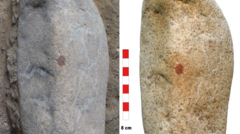A recent study indicates that bedbugs, which are solely dependent on humans for survival, made the transition from cave-dwelling bats to early humans around 245,000 years ago and flourished during urbanization, marking them as the first urban pests.
Bedbugs: Ancient Partners of Early Humans in Urban Life

Bedbugs: Ancient Partners of Early Humans in Urban Life
New research reveals that bedbugs have been thriving off humans for over 245,000 years, changing their dining habits since humans first settled in urban environments.
In an intriguing revelation about the history of human pests, a new study highlights the long-standing and successful association between bedbugs and humans, which dates back approximately 245,000 years. This relationship began when early humans, such as Neanderthals, shared living spaces with cave-dwelling bats, leading to the bedbugs' shift in diet from bat blood to human blood.
Unlike many other species, bedbugs are exclusively monogamous with humans and do not dwell in gardens or natural environments. Their dependence on humans for survival underscores their unique evolutionary path. The study, published in the journal Biology Letters, outlines how bedbug populations remained low during humanity's nomadic periods but surged dramatically with the advent of settled urban lifestyles around 13,000 years ago.
Warren Booth, a professor of urban entomology at Virginia Tech and a lead author of the study, pointed out that the insects are entirely reliant on humans for their dispersal and survival. Despite the discomfort they cause through their bites, bedbugs do not transmit diseases, although they can provoke mild irritations upon feeding.
This remarkable adaptability and specialization make bedbugs a fascinating subject of study, demonstrating how urban environments have influenced pest populations throughout history.






















